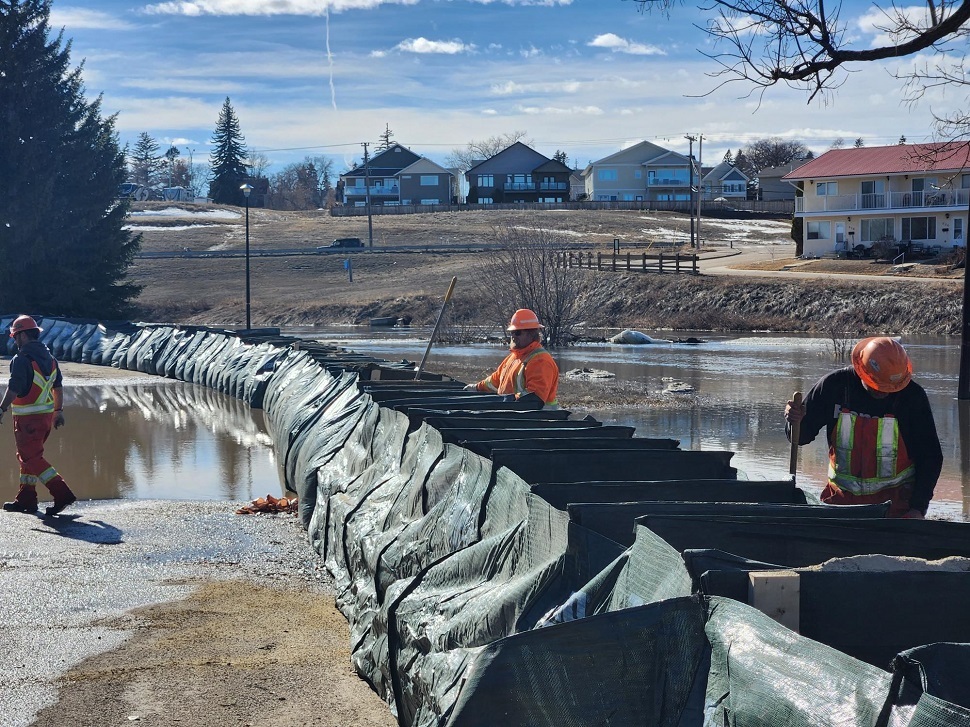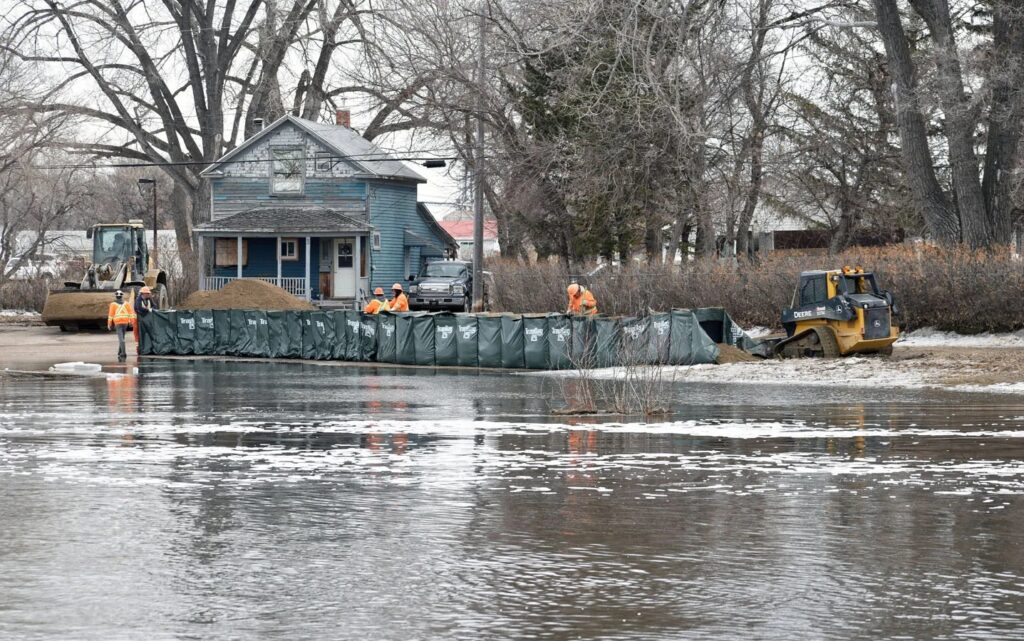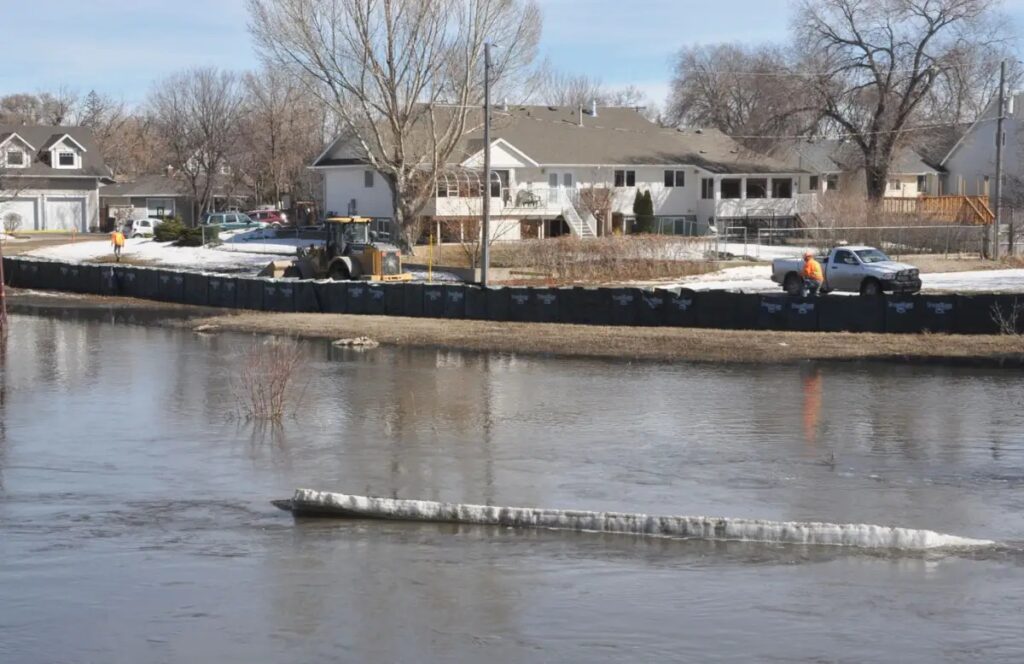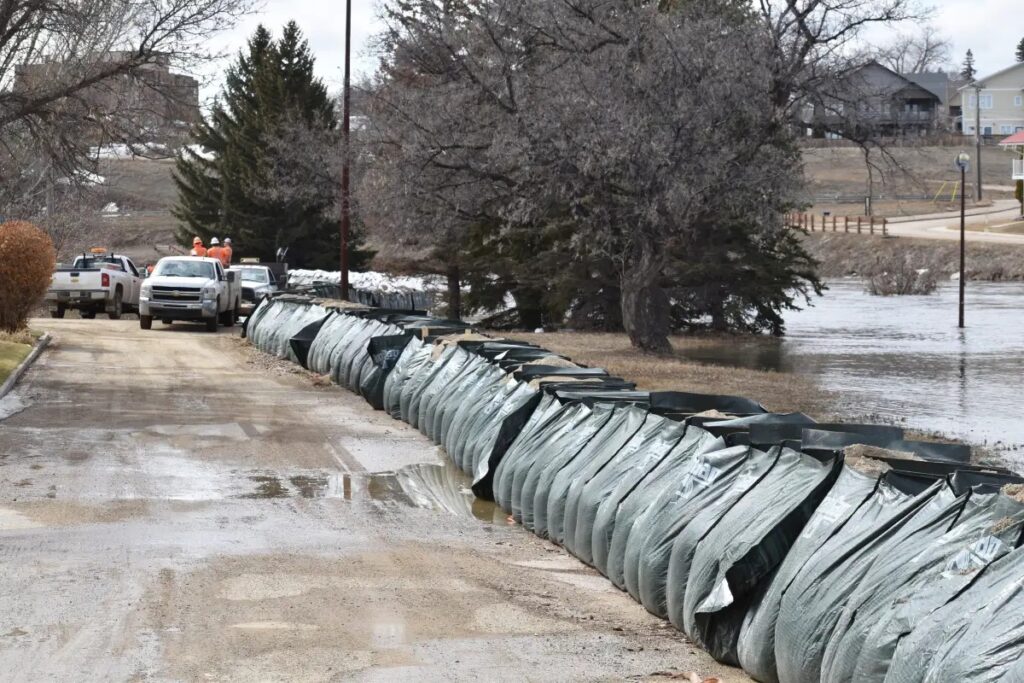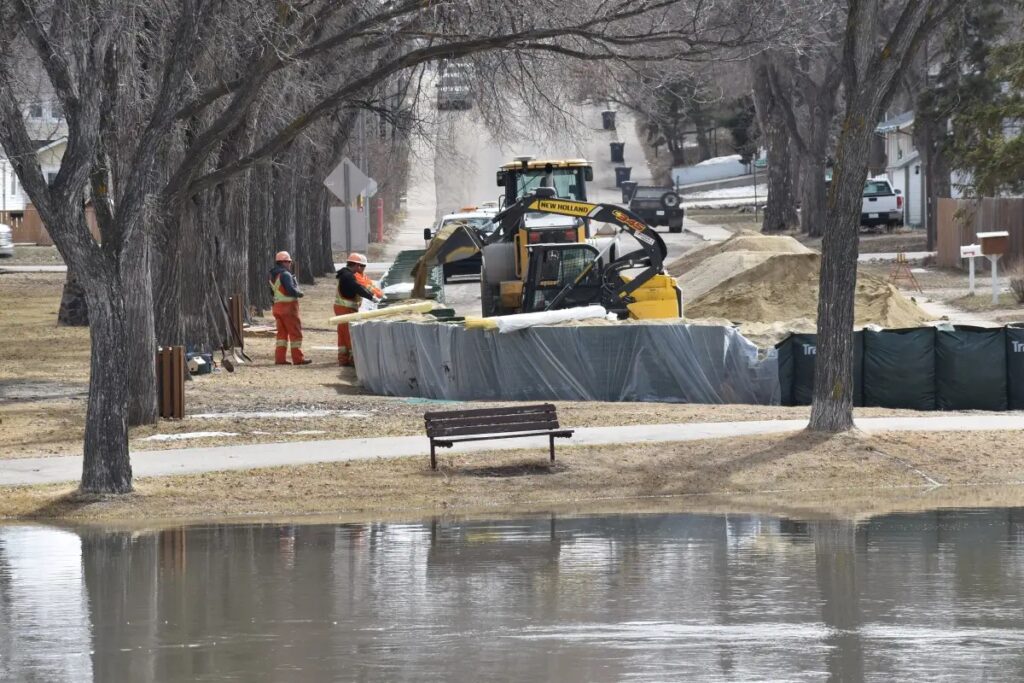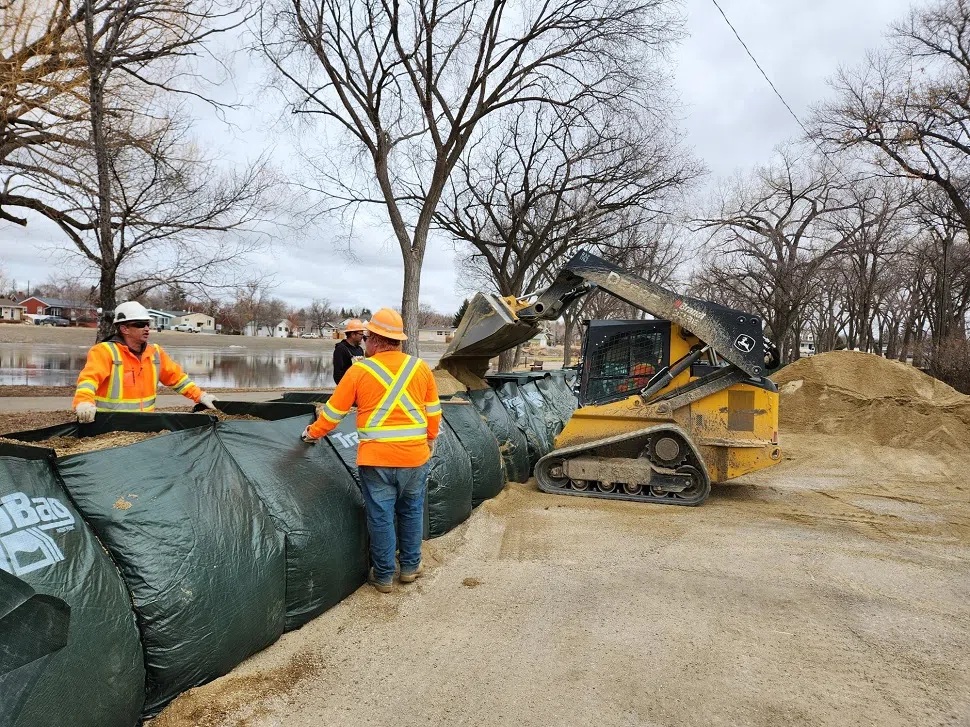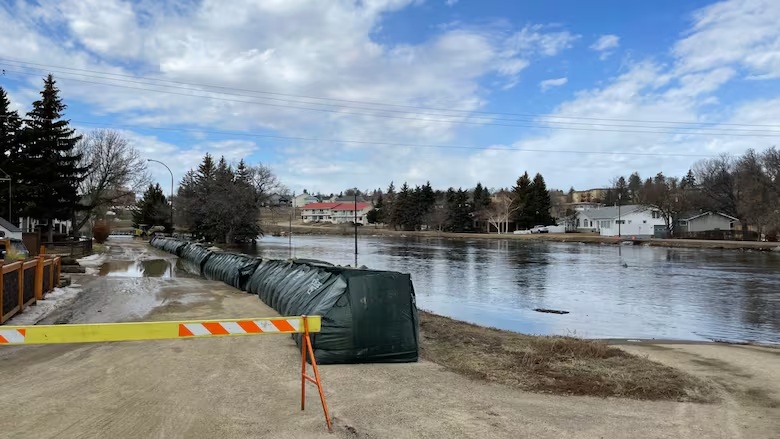Project Specifications
- Product used: 4-ft TrapBag® flood barrier system
- Installation configurations: Linear levee along creekbanks, storm drain reinforcements
- Material: Woven polypropylene
- Fill material: Sand and gravel (no concrete)
- Reinforcement: None required beyond strategic placement on mixed terrain (grass, asphalt, concrete)
Initial Solution
To rapidly protect the city, Swift Current installed:
- 4-ft TrapBag® flood barriers along breach-prone residential and urban creekbanks
- Temporary levees in low-lying neighborhoods
- Reinforcements at stormwater outlets, culverts, and drains
Unintended Longevity
Although intended as a temporary emergency measure, the TrapBag® flood barriers stayed in place for nearly 24 months. Despite exposure to year-round weather conditions—including snow, freeze-thaw cycles, and heavy rains—they maintained structural integrity with minimal maintenance required. This extended protection allowed city officials to plan and implement long-term flood mitigation strategies without the pressure of an immediate rebuild.
Project Expansions and Reinforcements
As the emergency response evolved, crews expanded TrapBag® installation beyond the original deployment zones. The barriers were used to:
- Reinforce storm drains and culvert openings to prevent backflow
- Redirect water away from critical urban infrastructure
- Establish a clear, visible flood perimeter in coordination with volunteers
Performance
TrapBag® barriers performed reliably throughout the flood event and remained effective for two full years. During the initial crisis, they helped:
- Hold back floodwaters across multiple breach-prone zones
- Prevent property damage in both residential and commercial areas
- Stabilize high-risk stormwater infrastructure under pressure
Officials reported a 50% reduction in deployment time compared to traditional sandbags, allowing emergency personnel to respond more strategically across multiple high-risk areas.
Key Outcomes
- Reduced Deployment Time: Over 50% faster to install than sandbags
- Urban Infrastructure Protected: Homes, streets, and stormwater systems remained secure
- Long-Term Durability: Functioned effectively across all seasons for nearly two years
Conclusion
TrapBag® flood barriers proved to be the right choice for Swift Current’s emergency response—offering fast deployment, long-term durability, and reliable performance under pressure. When the barriers were removed in April 2025, they left minimal environmental impact, and the fill material was responsibly reused or recycled.
For more information, see the following media coverage:
- City crews build barriers to contain Swift Current Creek – Swift Current Online
- Swift Current declares state of emergency amid flooding – Global News
- Swift Current remains in a state of emergency due to flooding from creek – CBC News
- TrapBag® Flood Barrier Video in Swift Current (YouTube)
- Flood barriers come down in Swift Current (April 2025) – Swift Current Online
You can’t always predict, but you can always prepare.
TrapBag® — The smart choice for emergency flood protection in Canada and beyond.
Installation Highlights
-
Deployed in Hours, Not Days: TrapBag® barriers were installed rapidly across multiple locations, outpacing traditional sandbag methods and enabling timely flood protection.
-
No Special Ground Prep Needed: Barriers were placed directly on grass, asphalt, and concrete—eliminating the need for grading or trenching.
-
Minimal Manpower, Maximum Impact: Lightweight, interlocking design allowed small municipal crews and volunteers to work efficiently during a high-pressure emergency.

